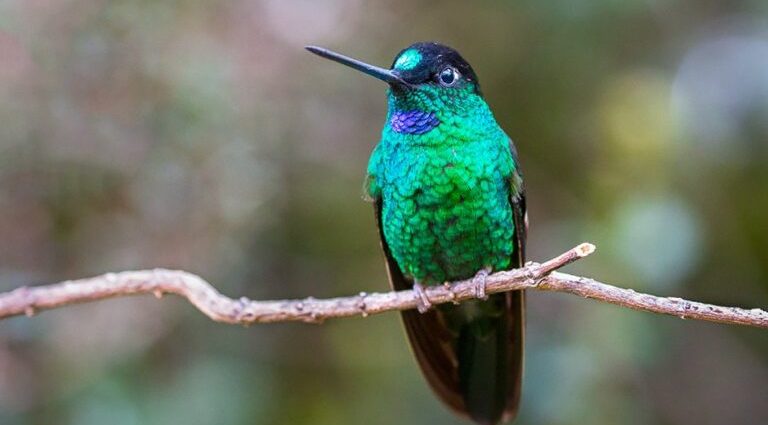Between the misty peaks of the Annamite mountains, animals as-yet unknown to science pick through primaeval forests.
Home to such endemic creatures as shimmering, iridescent snakes, the fancifully coloured douc’s langur and the saola, a rare deer-like animal also known as the “Asian unicorn”, the Annamites are a biodiversity hotspot.
But these densely forested mountains, which span the border highlands of Laos, Vietnam and eastern Cambodia, are increasingly under threat. A recent World Wide Fund for Nature (WWF) report celebrated the distinctive animals of the range while sounding an alarm that deforestation and an estimated multi-billion-dollar, illegal wildlife trade is gradually eradicating such creatures – leaving open the possibility that as-yet unknown species could be wiped out before ever being recorded to science. Even if humans are unaware of these losses, forests across the range are already bearing the ecological toll.

“As wildlife species disappear, their ecological roles are lost, and the forest changes too, in terms of composition, structure and function,” said Yoganand Kandasamy, a conservation biologist and senior author of the report.
Despite being considered a single range, the Annamites feature diverse habitats the WWF report describes as an “evolutionary laboratory”. These include limestone karst hills, mature secondary forest and patches of primary wet evergreen forest. The WWF notes the Annamites have one of the largest contiguous natural forested areas in continental Southeast Asia with nearly 11,000 square kilometres of habitat.
This has helped a number of endemic species to evolve.
Among these is the kha-nyou, a karst-dweller and so-called ‘living fossil’ first scientifically recorded in 2005 from specimens collected almost a decade prior in a Lao market. The sole surviving member of the Diatomyidae family, all other species in its taxonomic category are thought to have vanished more than 10 million years ago.
But modern history has left deep scars on the forests, which sustained heavy damage during the Vietnam War. More recently, according to data from Global Forest Watch, Vietnam has lost more than 740,000 hectares of humid forest in the past 20 years, contributing to about a 21% decline in total tree cover. WWF points out that much of this deforestation happened in the Annamites.

The mountains have held onto their habitat better than some lowland areas due to the difficulty of access there, but even with legally protected status, new roads and agricultural expansions have gradually crept up the slopes. This has also helped to open the mountains to enterprising loggers and hunters.
The preferred tool of many poachers in the Annamites, and elsewhere in the region, is the snare – a twisted loop of rope or wire used to trap animals indiscriminately. Such snares have contributed to what conservationists in the region call “empty forest syndrome”, in which habitats maintain their trees but are cleared of animal life.


Out of the suspected 12.3 million snares hidden in the undergrowth in the region, more than 120,000 have been removed from the Hue and Quang Nam saola nature reserves in Vietnam. This industrial-scale snaring crisis is fueled by market demands for meat, traditional medicines and exotic pets.
Snares are often sold in local village stores, and vary in materials and sizes. Some are made with car winch cables to catch larger animals while the more abundantly found are twisted motorbike brakes and clutch wires, explained Yoganand.


Even with substantial forest cover still remaining in the area, conservationists say the sheer volume of these snares are changing the Annamites’ natural character and ecological functions.
“[This is] because animal populations, which are integral to the forests, are being lost,” Yoganand said.
The loss of seed-dispersing animals such as the Annamites’ gibbons could favour the spread of more wind-dispersed trees, which are smaller and less dense than animal-dispersed ones. This change to the tree composition could result in lower carbon sequestration and storage by the forests, Yoganand explained, diminishing a crucial ecosystem service on which humans rely.
Many gibbon populations of the Annamites have already declined and are becoming locally extinct due to snaring – often to then be sold into the pet trade.

The local human populations play various roles in the wildlife trade and the longevity of Annamite endemics. The WWF said some communities have acted as good stewards, pointing to one in the Quang Binh province of Vietnam that has protected the Hatinh langur from illegal hunting for more than a decade.
But other locals are involved in the trapping and hunting to supply urban wildlife markets. Others are simply unaware of an animal’s endemic status and the role the species has in the critical ecosystem services of the forest.

From the perspective of the most vulnerable communities nestled along the Annamites and relying on it for subsistence, the short-term economic interests in the wildlife trade shroud the consequences of a decaying ecosystem.
“Well-functioning forests help vulnerable communities, often acting as a safety net to prevent people from further hardships during difficult times,” Yoganand said. “It helps them become resilient to climate change and other disastrous events such as prolonged droughts.”


